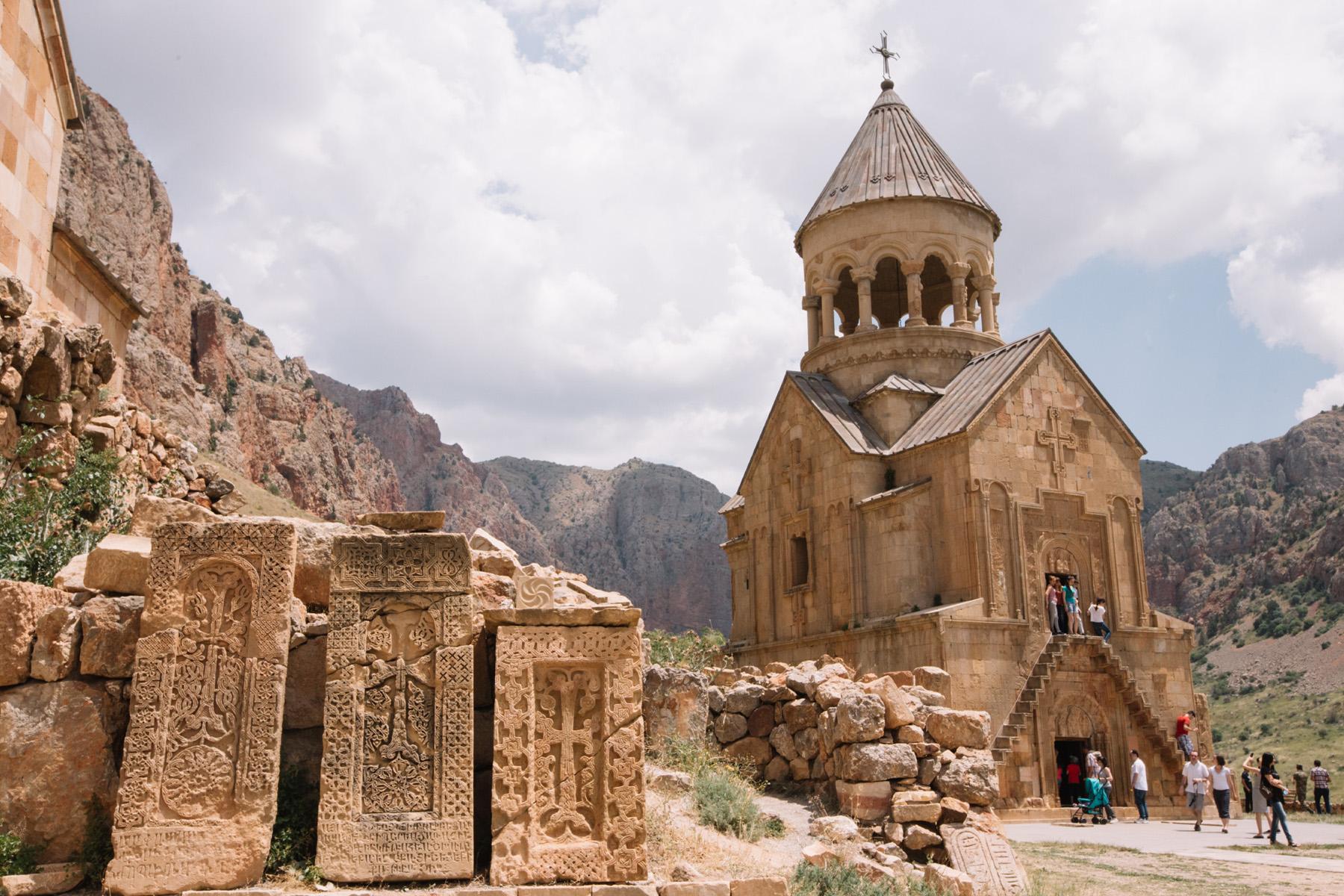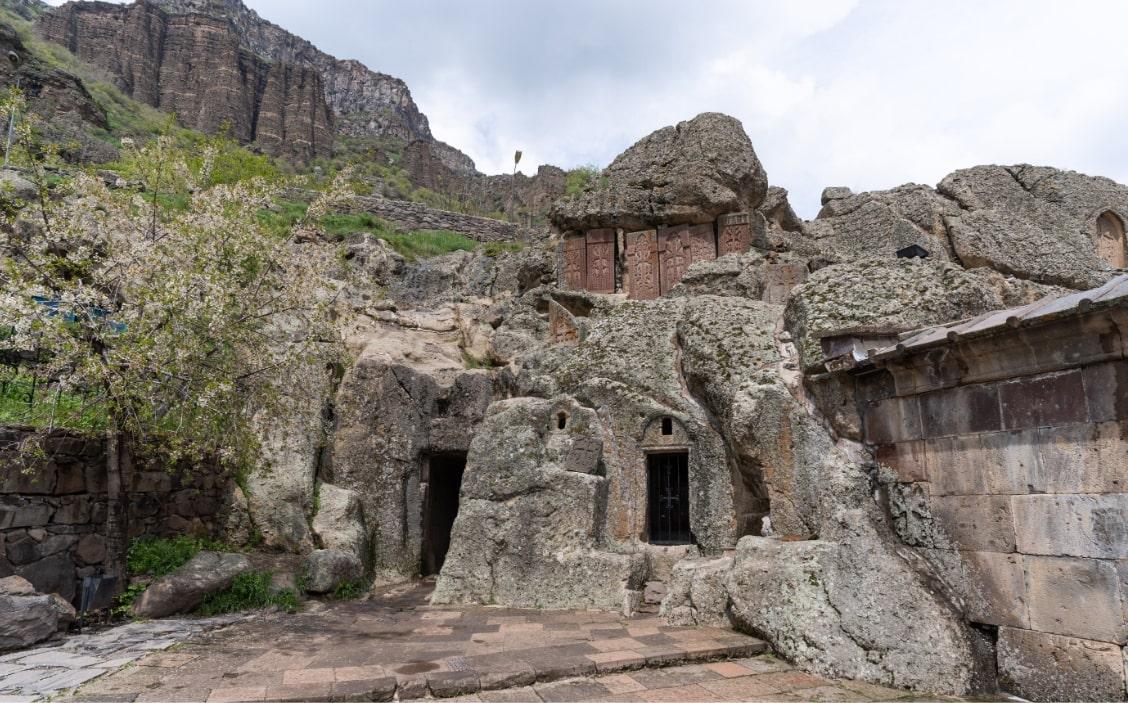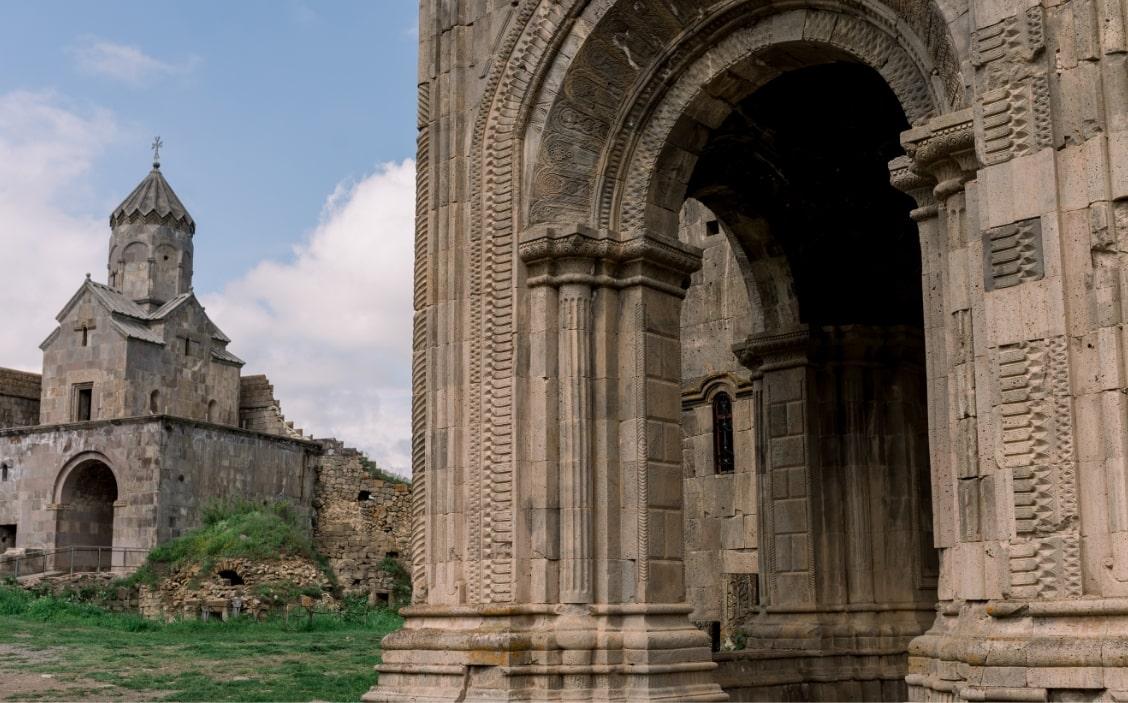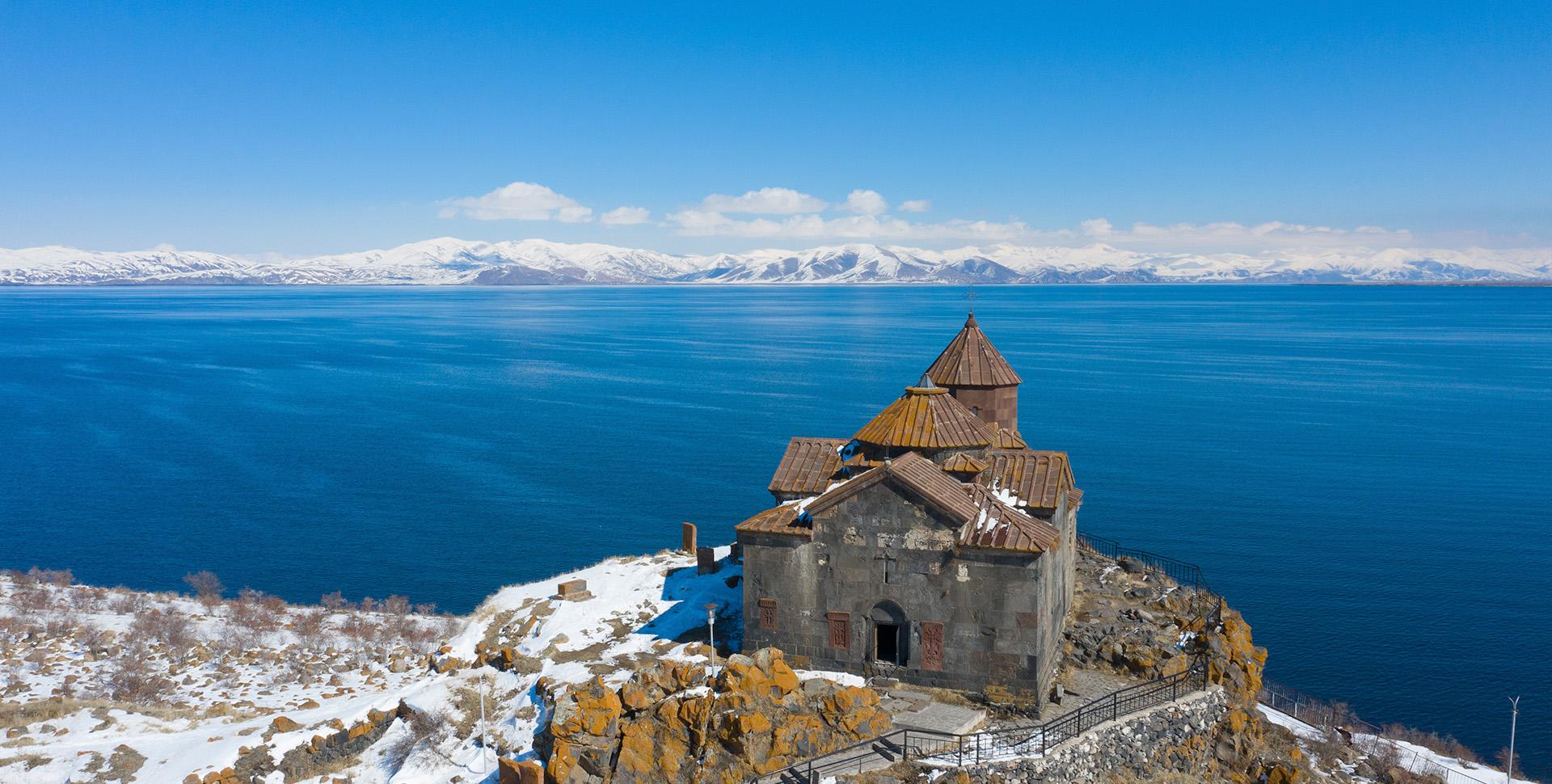Noravank Monastery
Architectural style:
Armenian
Date of foundation:
13th century
Region
Vayots Dzor

You only need to catch a glimpse of Noravank Monastery, perfectly blended with the surrounding nature, to long to return to Armenia. Are you ready to uncover one of our country's most marvelous religious sites? Hit the road, and don’t forget your camera to capture beautiful Noravank against the backdrop of the deep red canyon and towering cliffs that surround it.
Getting to Noravank is easy. It is about a 1.5 hours drive from Yerevan. To reach this destination take a taxi, join a group tour, or get on Yerevan-Yeghegnadzor public transport that will take you to nearby Areni village.
On the way to Noravank, you can stop at Khor Virap Monastery and enjoy the most incredible views of Mount Ararat. Since there are plenty of options for authentic dining, stop for lunch and wine tasting in Areni village. Several wineries, gastro yards, and local houses offer delicious homemade food – a necessary top-up to your trip to the southern regions of our country. We suggest you have a sip of wine made from local Areni grape varieties and visit the Areni 1 Cave – the oldest winery in the world and the origin of the region's winemaking.
Located in the Vayots Dzor region, it’s a lovely ride through Gnishik Canyon to reach Noravank Monastery. This natural setting enhances the beauty of the monastic complex, and it also adds to the sense of seclusion and spiritual contemplation associated with monasteries. Along the driveway, you will see many caves in the canyon. Gnishik Canyon is also an important bird-watching area. If you are lucky, you might see some birds of prey soaring high in the sky.
About 10 minutes drive within the canyon, you will reach Noravank Monastery, a 13th-century monastic complex that was once a well-developed and prospered spiritual and educational center.
The jewel of Noravank
As you enter the gates, you will immediately recognize the most famous building of Noravank Monastery – the Burtelashen (“Built by Prince Burtel”) or St. Astvatsatsin (Holy Mother of God) Church. Burtelashen, or St. Astvatsatsin Church, is a two-story building. The stairs lead to the mausoleum-sepulcher of Prince Burtel’s family underground, and the stair is adjacent to the outer walls of the building, leading to the church on the second floor.
Burtelashen has a unique architectural style, genuinely distinctive from what you can see in other medieval monasteries. Just a brief glance at the walls will reveal dozens of insightful carvings, decorations, and ornaments, allowing you to fully appreciate its worth.
Some of the finest wall engravings include depictions of the Virgin Mary, Apostles Peter and Paul, Jesus Christ, Gabriel, and Michael Archangels, and other religious figures, combined with floral and geometric patterns.
The monastic complex also includes several other structures, such as the ruins of academia, the oldest church of St. Karepet, 13th-century St. Stephen church, St. Gevorg tomb, a couple of 18th-century chapels, and dozens of khachkars (cross-stones).
Noravank was one of medieval Armenia's most important religious, cultural, and educational centers. Like any other sacred site built in Medieval times, the monks at Noravank Monastery copied religious texts and created illuminated manuscripts. The monastery was also a residence of the Orbelian princes, one of the most influential families in medieval Armenia.
In the 13th-14th century, the Orbelian family became the monastery's patron and significantly contributed to its development. Prince Smbat Orbelian built the Surb Karapet church, and his brother, Prince Stepanos Orbelian, built the refectory and the scriptorium. The Orbelians also commissioned the decoration of the churches with intricate carvings and frescoes.
In addition to these individuals, many skilled artisans and craftsmen worked on the construction and decoration of the monastery, creating the beautiful stone carvings and frescoes that are still admired today.
Why is Noravank worth visiting? It comprises all the exquisite details of church architecture, splendid decorations, and stunning natural scenery. For anyone traveling to Armenia who enjoys history, architecture, art, and nature and wants to experience the grandeur of medieval Armenia all at once, this is a must-see location!
Many famous scholars, thinkers, and figures of Medieval Armenia have lived and studied at Noravank. It would be a mistake not to mention Momik, a prominent figure in Medieval Armenia's cultural and literary life.
Most of the lavishly decorated cross-stones and the ornaments you will see on different structures of Noravank Monastery belong to Momik. He was also a gifted poet and a skilled calligrapher and his works are considered masterpieces of Armenian medieval literature. There is a small museum on the grounds where you can observe some of the works by Momik, an essential figure in the history of Armenian culture and literature, whose works continue to be studied and admired today.
The best tip to follow when visiting Noravank Monastery: plan the trip in order to reach Noravank just before dusk. Imagine the red cliffs and the monastery's limestone structures vibrating with the hues of the sunset. A moment worth experiencing and enjoying!



